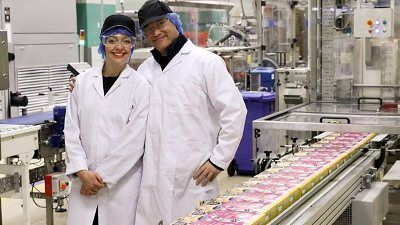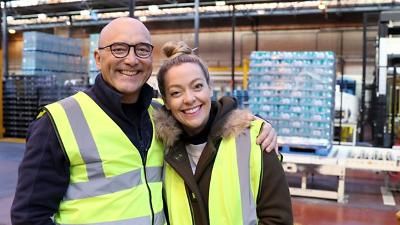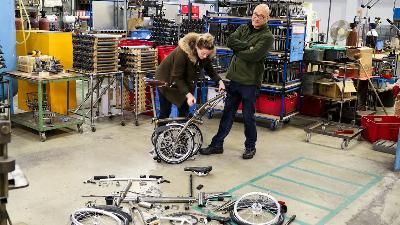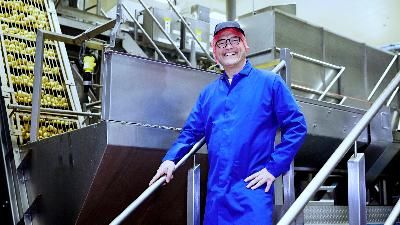The BEST episodes of Inside the Factory season 2
Every episode of Inside the Factory season 2, ranked from best to worst by thousands of votes from fans of the show. The best episodes of Inside the Factory season 2!
Paddy McGuinness and Cherry Healey hit factory floors across Britain for a snoop around their supersized production lines. What are the secrets behind our supermarket staples?

#1 - Cereal
Season 2 - Episode 1 - Aired 7/26/2016
Gregg Wallace receives a load of corn fresh off the boat from Argentina and follows its journey through the largest breakfast cereal factory in Europe.
Watch Now:Amazon
#2 - Baked Beans
Season 2 - Episode 3 - Aired 8/9/2016
Gregg Wallace helps to unload 27 tonnes of dried haricot beans and follows them on a journey through the world's largest baked bean factory.
Watch Now:Amazon
#3 - Shoes
Season 2 - Episode 6 - Aired 8/30/2016
Gregg Wallace visits the UK's largest sports shoe factory to see how they produce 3,500 pairs of trainers every day.
Watch Now:Amazon
#4 - Sweets
Season 2 - Episode 5 - Aired 8/23/2016
Gregg Wallace helps to unload a tanker full of sugar from Norfolk and follows it through one of the oldest sweet factories in Britain.

#5 - Bicycles
Season 2 - Episode 4 - Aired 8/16/2016
Gregg Wallace visits Britain's largest bicycle factory, which produces 150 folding bikes every day, and joins a production line to make his own bike.

#6 - Crisps
Season 2 - Episode 2 - Aired 8/2/2016
Gregg Wallace follows 27 tonnes of potatoes from a farm in Hampshire through the largest crisp factory on earth.